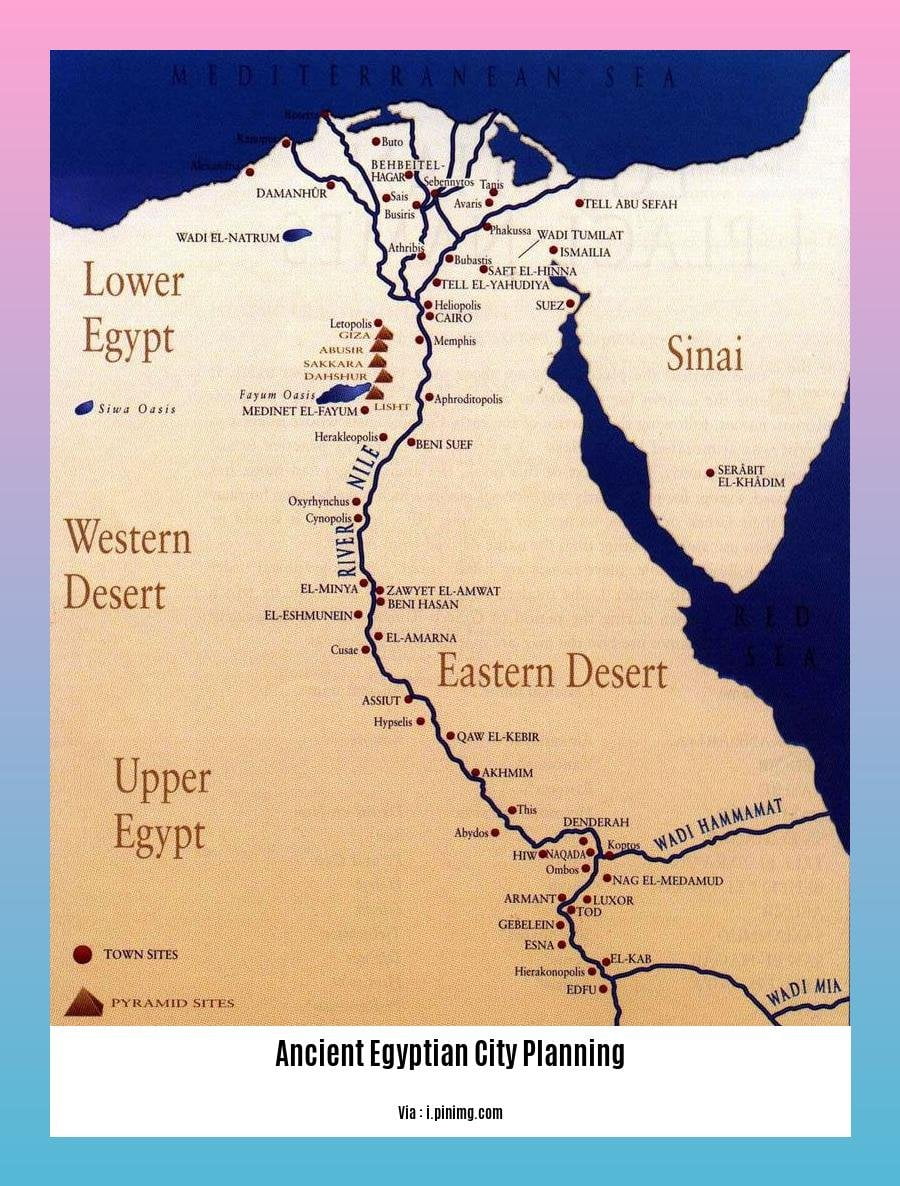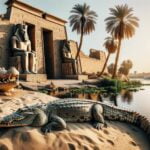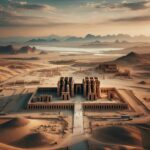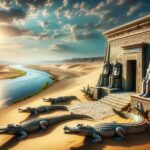Step into the world of ancient Egypt, where the sands hold secrets of urban wonders that defy time. [Ancient Egyptian City Planning: Unraveling the Secrets of Urban Development in Pharaoh’s Kingdom] takes you on a journey to decipher the ingenuity behind Egypt’s ancient cities. Discover how urban design mirrored the divine order, with meticulous planning that showcased their unique culture and engineering prowess. Join us as we explore the legacies of these ancient architects and uncover the intricate connections between city layout, social structure, and the grandeur of pharaonic Egypt.
Key Takeaways:
Ancient Egyptian cities were developed near water sources and higher ground to protect against flooding.
Pharaohs played a crucial role in urban planning, prioritizing the construction of monuments like pyramids and temples.
Restricted entrances and boundary walls were common features of Egyptian cities, enhancing security and access.
Existing ruins and ongoing habitation in Egyptian cities hinder comprehensive understanding of their overall designs and planning approaches.
Rulers considered factors like population density and the Nile River’s significance when planning cities.
The precise methods used to measure heights and construct pyramids and temples are still debated and studied by archaeologists.
Ancient Egyptian City Planning: A Testament to Advanced Urban Design
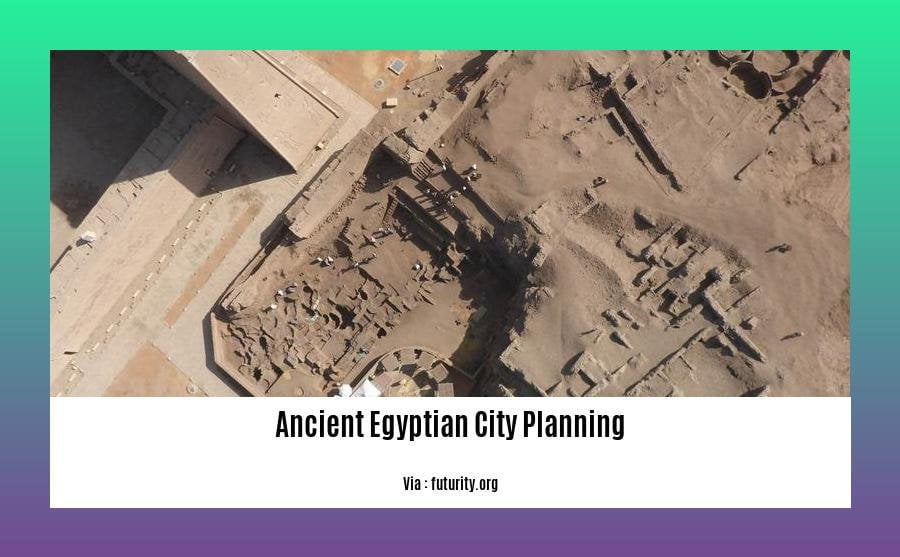
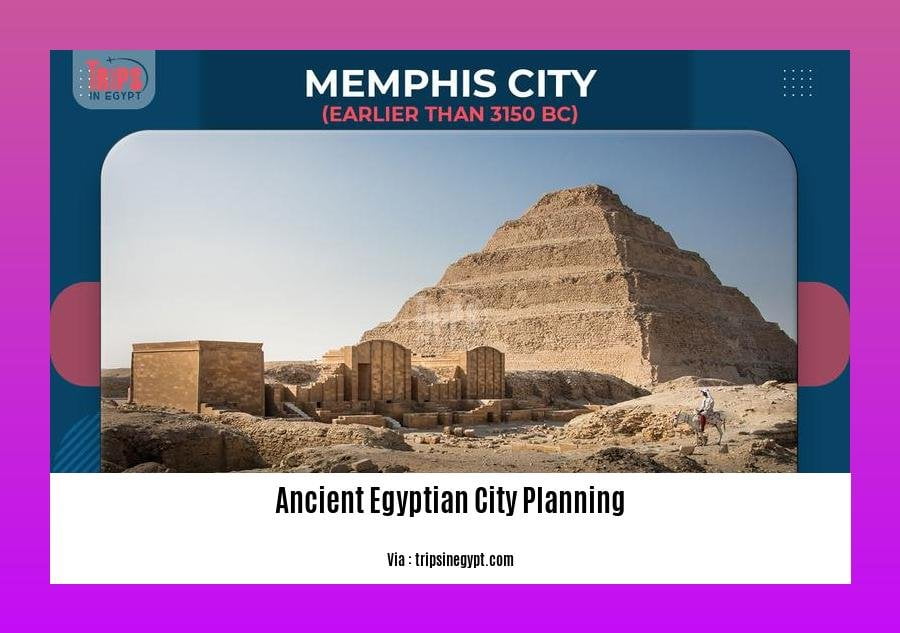
Ancient Egyptian city planning was a testament to the advanced urban design and planning skills possessed by the ancient Egyptians. Their cities were meticulously planned with considerations for water sources, elevation, security, and the significance of the Nile River.
Water and Elevation: Shaping Urban Landscapes
- Ancient Egyptians strategically positioned their cities near water sources, such as the Nile River, for reliable access to water for domestic use, irrigation, and transportation.
- Elevated grounds were chosen to protect cities from the annual flooding of the Nile, ensuring the safety of residents and their belongings.
Pharaohs’ Legacy: Urban Planning and Monumental Architecture
- Pharaohs played a pivotal role in urban planning, investing resources in the construction of awe-inspiring pyramids and temples.
- These monumental structures served as symbols of ancient Egyptian power, prosperity, and religious beliefs, leaving an enduring legacy for generations to come.
Security and Controlled Access
- Ancient Egyptian cities featured boundary walls and restricted entrances, providing security and controlled access to residential and sacred areas.
- This design approach ensured the safety of the city’s inhabitants and protected them from potential threats.
Limited Remains: Unveiling the Past
- Today, archaeologists face challenges in fully understanding ancient Egyptian city designs due to limited remains and ongoing habitation in these areas.
- Despite these challenges, ongoing excavations and research continue to shed light on the ingenuity and sophistication of ancient Egyptian urban planning.
Rulers and Kings: Addressing Population Growth and the Nile
- Rulers and kings recognized the need to address population density and the significance of the Nile River as a lifeline for their people.
- They commissioned urban planning projects that optimized land use and provided access to essential resources.
Measuring and Constructing: Methods and Techniques
- The methods used by ancient Egyptian architects and engineers to measure height and construct pyramids and temples remain subjects of ongoing discussion and archaeological investigation.
- Studying these techniques provides valuable insights into the advanced scientific knowledge and engineering skills of the ancient Egyptians.
Explore the depths of ancient Egyptian linguistics with our comprehensive ancient Egyptian language dictionary, where you’ll find translations, pronunciations, and historical context of hieroglyphs and words.
Unravel the harmonious melodies of ancient Egypt by delving into our ancient Egyptian music scale resource, where you can discover the scales, instruments, and musical practices that captivated the ancients.
Embark on an adventure through Egypt’s rich history with our ancient Egyptian name generator, crafting a unique and meaningful name inspired by the pharaohs, deities, and symbols of this fascinating civilization.
Ancient Egyptian Urban Planning: Unraveling the Secrets of Urban Development in Pharaoh’s Kingdom
Key Takeaways:
Learn how ancient Egyptian urban planners shaped flourishing cities.
Predynastic settlements were small and made with perishable materials, leaving limited evidence of planning.
Towns like El-Lahun and settlements like Tell el-Dab’a offer glimpses into the urban designs of the Middle Kingdom.
Pharaohs invested in urban planning, using it as a tool for security, economic growth, and religious expression.
Ancient Egyptians used walls, restricted entrances, and structured layouts to control access and ensure the safety of their cities.
Several factors influenced the design of ancient Egyptian urban areas, including trade, geography, and cultural and religious beliefs.
Temples, markets, and residential areas were integral parts of ancient Egyptian cities.
The ancient Egyptian urban planning approach, characterized by density, organization, and security, laid the foundation for urban development throughout the region.
Deir el-Medina, located in a valley on the west bank of the Nile River, stood as a prominent workmen’s village.
The ancient Egyptians’ remarkable prowess in ancient Egyptian urban planning serves as a testament to their profound understanding of urban design and societal organization. Their cities stood as vibrant centers of economic activity, religious devotion, and social interaction. As we journey through the remnants of their magnificent creations, we gain insights into their innovative techniques and gain inspiration for future urban planning endeavors.
The ancient Egyptians constructed their cities with great care. They wanted to make sure that their cities were well-organized and easy to live in. They also wanted their cities to be beautiful and secure. This led to them developing many different urban planning techniques.
The walls and restricted entrances of Egyptian cities served as protective barriers against external threats like invasions or raids. And the structured layouts, often centered around temples and other religious structures, fostered a sense of communal identity and cohesion.
With El-Lahun, constructed under Senusret II, showcasing the brilliance of Middle Kingdom urban planning and settlements like Tell el-Dab’a revealing insights into early Middle Kingdom designs.
Moreover, the layout of streets, buildings, and other structures reveals the vibrant social interactions and economic activities that took place in these urban centers. Temples, the heart of religious life, stood tall alongside markets bustling with trade and residential areas teeming with diverse communities.
The legacy of ancient Egyptian urban planning continues to inspire contemporary urban design. Its focus on density, organization, and security offers valuable lessons for creating sustainable and livable cities today. Through the lens of these ancient cityscapes, we gain a deeper appreciation for the ingenuity and foresight of the ancient Egyptians. As we continue to explore these urban ruins, we uncover not just stones and artifacts but tales of human ambition, cooperation, and the enduring power of urban civilization.
Sources:
* Urban Planning in Ancient Egypt – World History Encyclopedia
- Ancient Egyptian Urban Planning – Egyptian Civilization
FAQ
Q1: How did the ancient Egyptians plan their cities?
A1: Ancient Egyptian city planning involved careful consideration of proximity to water sources, elevation above the Nile to prevent flooding, boundary walls for security, and controlled access. Rulers invested in urban planning, constructing pyramids and temples as symbols of their civilization.
Q2: What challenges do archaeologists face in studying ancient Egyptian cities?
A2: Studying ancient Egyptian cities presents challenges due to limited remains and ongoing habitation. This impedes our full understanding of their overall designs and specific planning approaches.
Q3: How did the Nile River influence urban planning in ancient Egypt?
A3: The Nile River played a crucial role in ancient Egyptian urban planning. Rulers and kings utilized urban planning to address population density and the significance of the Nile as a lifeline for the people.
Q4: Can you name some examples of ancient Egyptian cities?
A4: Examples of ancient Egyptian cities include El-Lahun, Amarna, Tell el-Dab’a, and Deir el-Medina. These cities showcase different aspects of urban planning and development during various periods of ancient Egyptian history.
Q5: What specific methods did the ancient Egyptians use to construct pyramids and temples?
A5: The exact methods used by the ancient Egyptians to construct pyramids and temples remain subjects of ongoing discussion and archaeological investigation. Researchers continue to study and debate the techniques employed in measuring height and constructing these monumental structures.
- Beyond the Beat: Unveiling Interesting Dance Facts from Around the World - July 26, 2024
- Unlocking Fleet Efficiency: Captivating Facts About FleetFinder - July 26, 2024
- Peel Back the Facts: The Unexpected Wonders of Banana Cleaner - July 26, 2024
